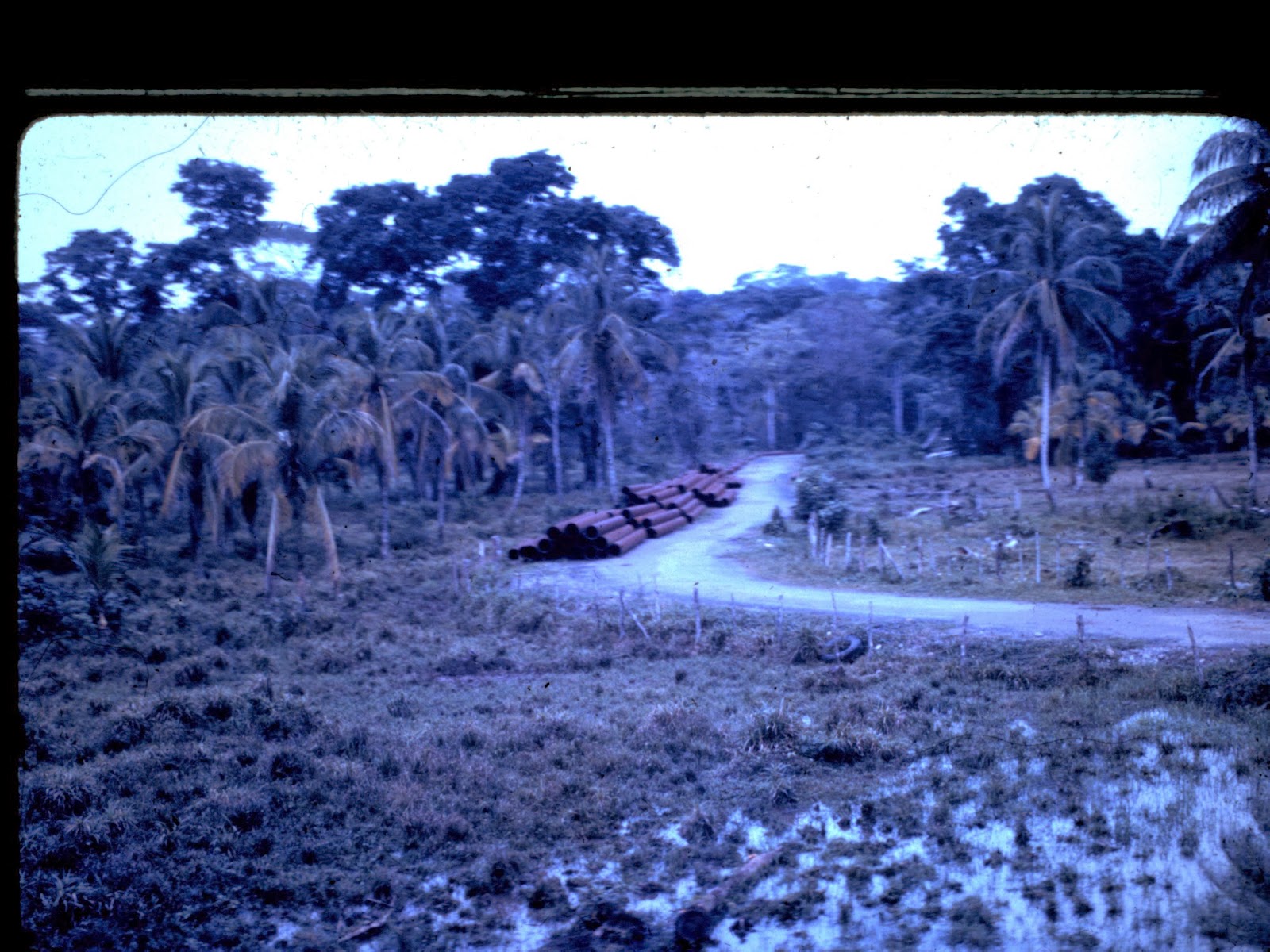Tracks of the StoneBear Copyright MCMLXIII Uncle Hargus ALL Rights reserved
ROF= Ring of fire Odyssey MEF-H = Marine Expeditionary Force- Hargus
Costa Rica 1977 UofA independent study
Las Bolas BALLS .... BIG BALLS
There is an archaeological phenomenon in Costa Rica. Balls. Big Balls. Las Bolas!
You see the big stone balls, spheres, in many places around the country. there are about 300 of them sized from a few inches to mostly about 2 to 3 feet in diameter. A couple are 6 feet but most are the size seen here... about 3'.
I asked many people and no one had a conclusive answer as to what were these balls/ spheres. ?What were they? Where did they come from? ?What were their purpose? Nada... no answers from the local Ticos.
My theory is based on my many journeys experience. I think my archaeological hypothesis is as possible as any I've heard. Bear with me here....
I do NOT think they were an artistic creation.
I do NOT think they were they symbol of tribal recognition, or tribal boundary markers. I considered this possibility but with the skill level to produce this precise stonework.... I did not see any structures or building of precise stonework... ie... the level of the stonework at machu pichu that required no masonry cement.
There was much masonry/ plaster work as masonry building was the only building that would survive the harsh wet tropical weather. Wood construction rotted in time in the wet tropics.
I think they were used as ships ballast.
My experience in the Marine Corps was in an engineer bridge unit. One of my many jobs was staging logistics for embarkation; in normal talk that means staging your bridge equipment... prepare and load pallets of gear for loading onto ships for battle deployment. You load the ship with your gear you'll need when you hit the beach. And what you need first, comes off first.
When you land on the beach and close with the enemy, go into battle... you'll need ammo first off the boat. preferably some long range artillery to pound those mothers, make them wet their pants and break their will to fight before we even close with them. The Marine Corps has a way of crawling up someones ass and changing the way they think about life. Anyway,... you don't need army cots first off the ship.
The "Load-master" of the ship / plane/ vehicle will determine the best way to counterbalance the total weight of the ship so it will run/ sail plumb and true... for the most efficient operating, and efficient maneuvering and speed. A ship listing to port side of 4 degrees would not run as efficient as loaded and plumb.
In military ships this could mean gaining 1 to 2 or more knots speed over your enemy; a huge tactical advantage in a sailing ship.
I also worked as a boilermaker/ ironworker in a shipyard as a teenager and have a real appreciation for the engineering of ships and their purpose.
Ballast is a shipping necessity. Especially in modern times... and maybe more important back in colonial era times.
The colonial era of explorers declaring territory for Spain, Portugal, Italy,... extracting the wealth and resources, gold and agriculture ect produced a direct route from the Caribbean back to Spain/ Europe.
Agricultural products and plants could be stored all through the hold - the cargo area in the bottom of the ships hull- the crew could not eat plants and dirt. Gold, silver and wealth prize captured would have been stored in a secure, locked room probably in the stern of the ship; a couple tons of ballast would be needed to sail the ship at top speed. That's where the stone spheres/ balls were needed. The 1 to 2 ton balls could be moved and loaded quickly.
For a short period of time, maybe a decade, during this extracting plunder of gold and resources out of Latin America/ Costa Rica... a wise ship captain/s were looking for an advantage to run the gauntlet of pirates back to Europe. For their time... the balls were a high tech advantage.
I could be wrong as rain. I've yet to read another theory as to the origin/ purpose of the Costa Rican Las Bolas. ... and I'm still searching.
The Cayman Islands were home/ host/ lair to the pirates, both state sponsored and privateers seeking prize, lay in wait for the heavy laden ships from Latin America. A couple knot tactical advantage would mean outrunning pirates. That is why ballast was so important. It was life or death/ captured and slavery for the slow ships and crew. These balls/ spheres were important enough to be made/ quarried/ manufactured. It's been a mystery on this journey.
******
The stone spheres (or stone balls) of Costa Rica are an assortment of over three hundred petrospheres in Costa Rica, located on the Diquís Delta and on Isla del Caño. Locally, they are known as Las Bolas. The spheres are commonly attributed to the extinct Diquís culture and are sometimes referred to as the Diquís Spheres. They are the best-known stone sculptures of the Isthmo-Colombian area
The Diquis culture (sometimes spelled Diquís) was a pre-Columbian indigenous culture of Costa Rica that flourished from 700 CE to 1530 CE.[1] The word "diquís" means "great waters" or "great river" in the Boruca language.[1]
You never drink twice from the same stream.
StoneBearTracks Copyright Uncle Hargus MCMLXIII ALL blog posts/photographs/video ALL Rights reserved
ALL Blog posts/photographs/video Copyright MCMLXIII ALL Rights Reserved






















































